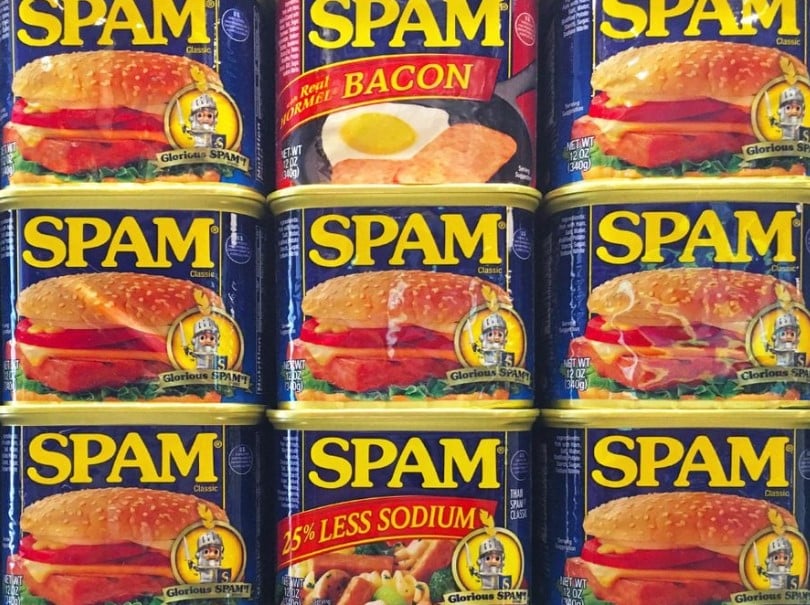Ever wonder what precisely goes into the well-known SPAM container of meat? You’re not alone, though! Due to its distinct flavor and adaptability, SPAM has been a mainstay in many homes’ pantries for many years. Now let’s explore the realm of SPAM and learn about its mysteries.
Hormel Foods, the company that invented SPAM, has become a household name worldwide since its creation in 1937. However, what does SPAM actually mean? Remarkably, the real significance of the name is still unknown. It could signify “Specially Processed American Meat,” according to some, while others surmise that it stands for “Shoulder of Pork and Ham.” The name of this well-liked canned beef has an aura of mystery because, in all honesty, we have no idea exactly how it was chosen.
To accommodate a range of palates, SPAM is available in a variety of tastes and variations. There is a SPAM to suit every taste, ranging from the traditional original flavor to variations including Hickory Smoke, Hot & Spicy, and even SPAM with Cheese. Pork with ham, salt, water, potato starch, sugar, and sodium nitrite are the six basic constituents of SPAM.

Let’s now take a little discussion on sodium nitrite. Because it’s frequently employed as a preservative in processed meats, this chemical frequently causes confusion and worries. Sodium nitrite helps keep bacteria from growing and keeps food from spoiling, so SPAM stays fresh and safe to eat for a longer amount of time. Some folks might rather consume less salt.
It’s interesting to note that the term “SPAM” has a backstory. Actor Ken Daigneau, whose brother is a Hormel Foods CEO, made the suggestion. Hormel Foods launched a naming contest, and Ken came up with the name. For his efforts, he was rewarded with a hundred dollars, a substantial amount in the late 1930s. Ken had no idea that his recommendation would go viral and become a staple of pop culture.

Beyond its modest beginnings, SPAM has evolved into more than just a canned meat. It’s become a cultural phenomenon that inspires inventive cooking, catchy music, and even plays. It can be fried, baked, grilled, or just eaten straight from the can because to its adaptability. Spam is a culinary superhero that can be found in anything from sushi fillings to pizza toppings to morning scrambles and sandwiches.
Hormel Foods invented SPAM in Austin, Minnesota in 1937, and it continues to be a popular food icon and topic of intrigue. Even while the precise origin of its name may be unknown, we do know that SPAM is made primarily of pork, ham, and a few other elements. Whether you adore it or haven’t had it yet, SPAM never fails to tantalize palates and inspire creative cooking across the globe. Thus, don’t be afraid to give SPAM a try the next time you see that distinctive blue and yellow can; you might just find a new favorite ingredient for your cooking!



